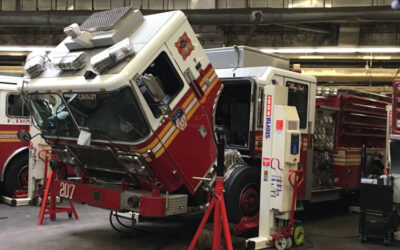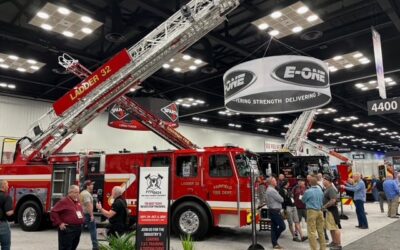By Bill Adams
The topic of roll-up doors on fire apparatus equipment compartments is a popular one of articles in the various trade journals. The door and fire apparatus manufacturers and industry pundits have all opined on the subject—some expectedly touting their own products and some expounding personal preferences. I express no personal favoritism for either hinged or roll-ups or for any manufacturer who fabricates or uses them.
Fire Apparatus & Emergency Equipment publishes a monthly list showing photos of about two dozen new apparatus deliveries. In the last three months, 66% of the deliveries featured roll-up compartment doors, 23% had hinged doors, and 11% had a combination of both. Individual apparatus manufacturers may have different ratios, however, I doubt they will vary much.
One of the early users of roll-ups was the former Saulsbury Fire Apparatus of Tully, New York. Alan Saulsbury said they started using roll-ups in the early 1980s after he and a customer visited and evaluated several door manufacturers in the United Kingdom. He added, “Roll-up doors are probably provided on 75% of today’s domestic production, and that percentage should continue to grow. Besides the domestic door manufacturers, there are several large ones in Europe and [Asia].”
Individual methods of door construction, its history, sales hype and bragging rights are left to the door manufacturers, which include Gortite, a Dynatect company; Amdor, a company in the Innomotive Solutions Group; and ROM, a Safe Fleet company. One of the better articles describing basic door construction, benefits and disadvantages is a November 3, 2020 blog by Pierce Manufacturing titled “Fire Truck Doors: Hinged Vs. Roll-Up Doors”.
Adam Graves, northeast sales manager at Safe Fleet and Terry Bay at the ROM Corporation were interviewed and were kind enough to provide the following generic roll-up door information applicable to the fire service and most door manufacturers. Their combined comments are referred to below as ROM.
Door Rolls
There are two locations for the door “rolls” when raised. One is just above the door header (figure 1) in front of the compartment, and the other is in the rear upper section of the compartment. ROM: “The front roll is the most common configuration. There is ease of maintenance with the roller up, and it allows larger equipment to be stored behind the roller. However, it can limit the door opening height space. The rear roll (figure 2) provides the largest door opening height. It works best with deeper compartments and there’s less obstruction of items stored in front. However, it is harder to reach if maintenance is required.”
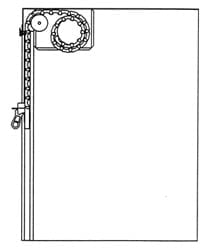
Interior diagram depicting a front door roll. (Courtesy of ROM.)
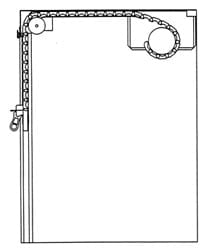
Interior diagram depicting a rear door roll. (Courtesy of ROM.)
Drip Pans
ROM: “We don’t recommend nor discourage drip pans. It’s truly an upsell, so we look at it as an option. It depends on what they are storing. Drip pans protect the doors from items getting “thrown” in and damaging the slats. If you have painted doors, they will help prevent them getting scratched (photo 1). They also prevent water dripping on equipment if doors are wet and in the rolled up position. A drain tube can be provided and run down through the department for drainage. The disadvantages are there is an extra cost, and if you have to work on the door such as making a speed adjustment or replacing slats, you will have to take the drip pan off first.”
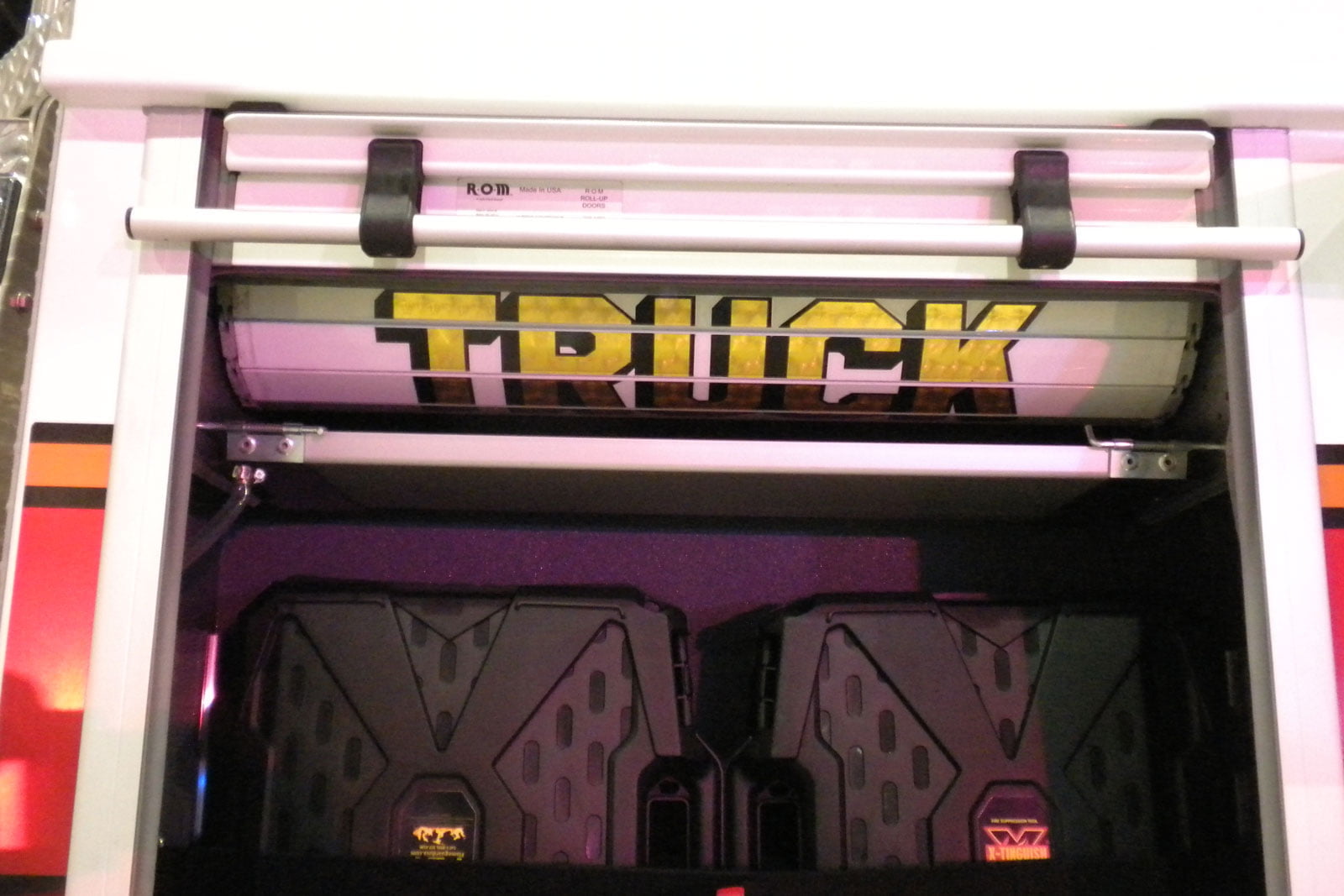
Drip pans protect slats from being damaged as well as graphics from being scratched. (Photo by author.)
Dimensional Considerations and Questions
Each door manufacturer has its own “usage” recommendations and dimensional recommendations, as does each apparatus manufacturer. Its best to check with them when laying out dimensionally specific equipment requirements. ROM’s answers are generally representative for the industry.
*What’s the approximate weight of a roll-up door that’ll fit a compartment 40 inches wide by 60 inches high? ROM: About 65 pounds.
*About how much do the vertical door tracks decrease a clear door opening’s width? ROM: Around 2¾ inches.
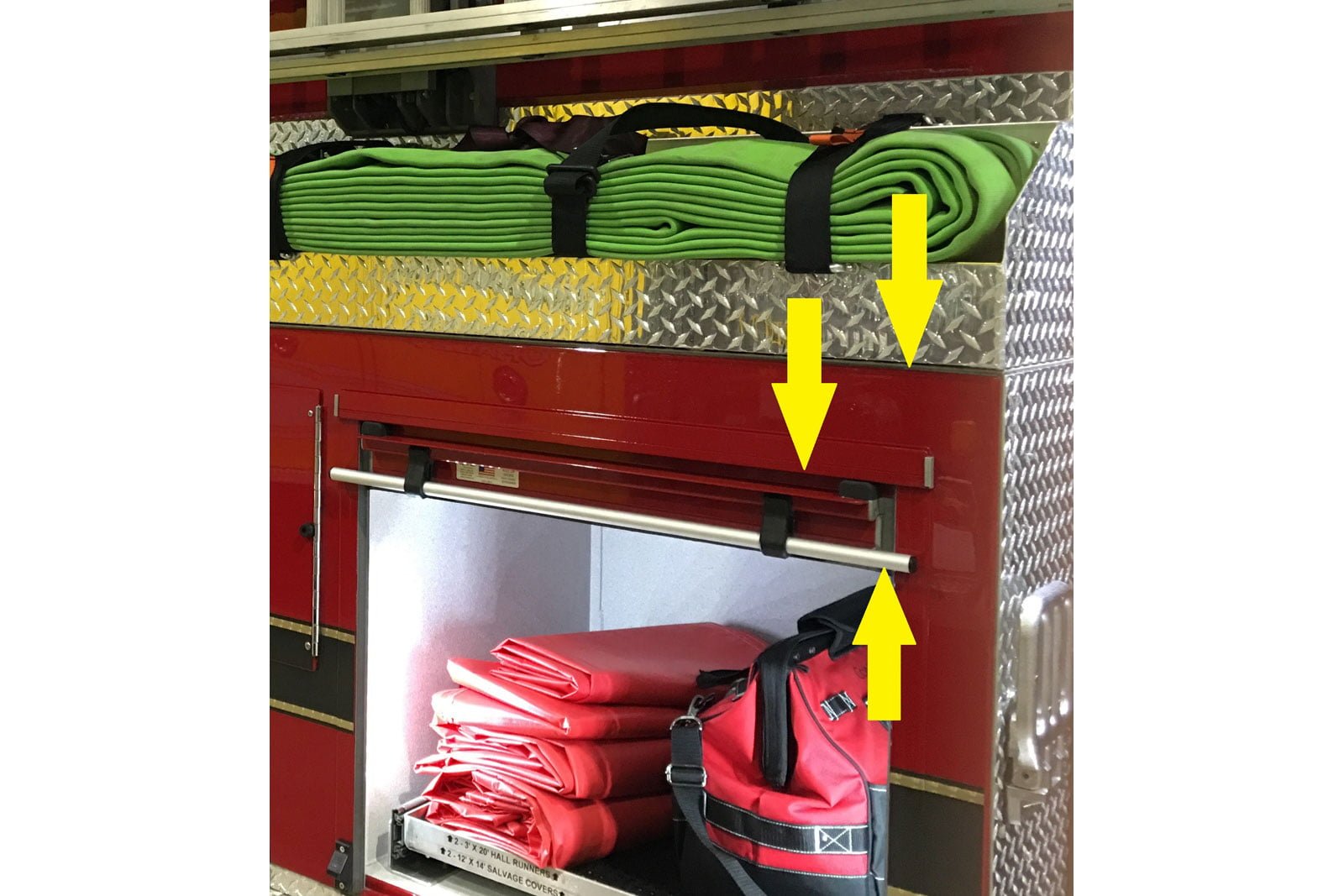
The distance in the raised position from the bottom of the door and the top of what is sometimes called the clear door opening varies between manufacturers and is always less than between the bottom of the door and the actual interior height of the compartment. (Photo by Ricky Riley.)
*Does the fire service tend to use painted roll-ups in lieu of unfinished door? ROM: It’s approximately 50/50.
*What’s a ballpark price to paint a roll-up door? ROM: Between $200 and $350 depending on the door size.
*When using painted roll-ups, do apparatus manufacturers usually purchase them prepainted? ROM: Generally.
*What’s an approximate size for a roll in the upper position for a 30-inch-high compartment? ROM: Six inches.
*What’s an approximate size for a roll in the upper position for a 60-inch-high compartment? ROM: Eight inches.
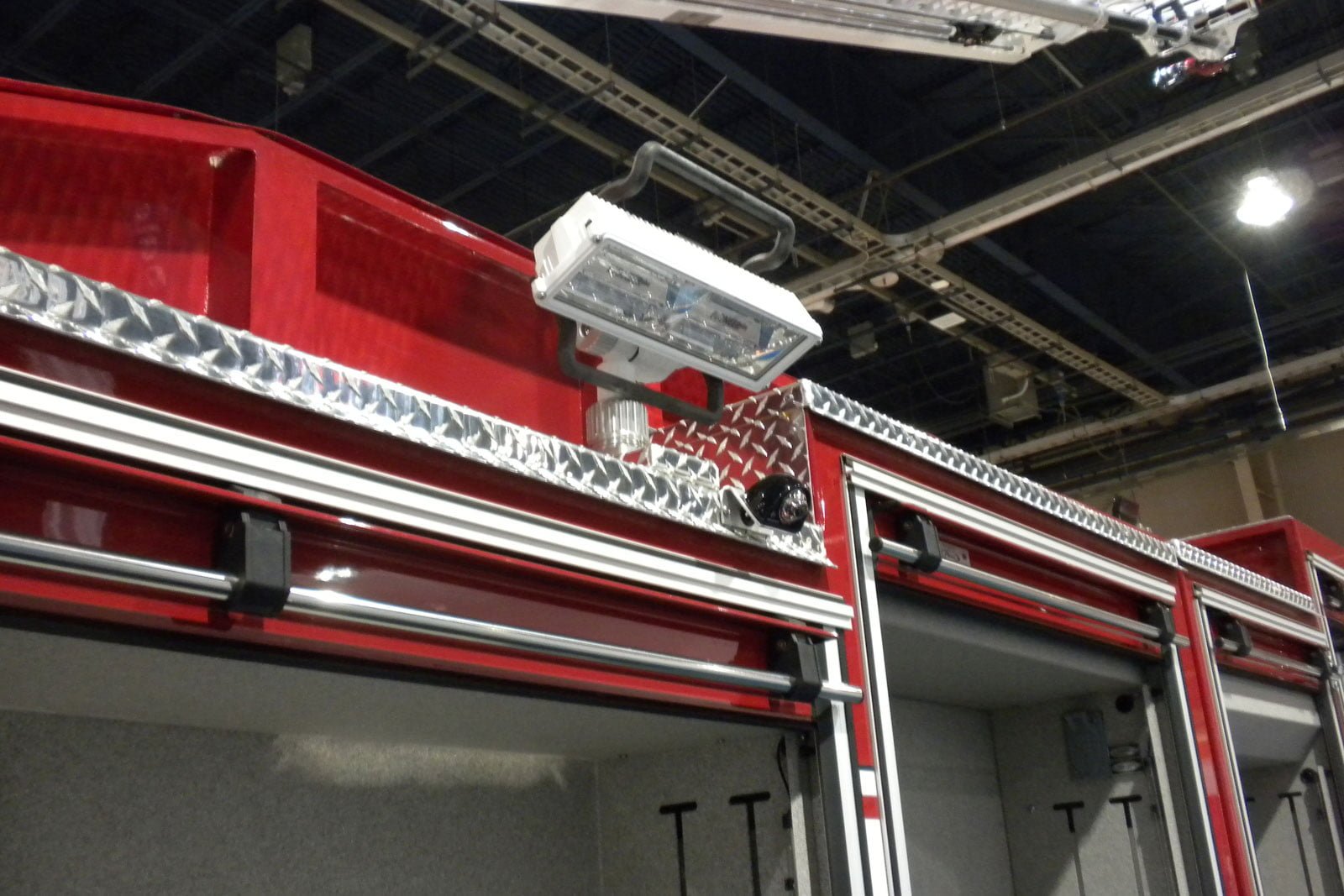
Drip pan configurations in various compartments. (Photo by author.)
*What is the recommended maximum width for a compartment with roll-ups? ROM: About 90 inches.
*Is there a recommended maximum height for a compartment with roll-ups? ROM: Around 104 inches.
*When a door is in the “up” position, what is the approximate distance from the bottom of the handle to the door header? ROM: About four inches.
*How far back from a door in the down position should shelves and trays be kept? ROM: One half inch will give enough space to prevent damage to the door and the most storage capacity. Also, the vertical and horizontal space required for the actual roll in the raised position varies with the size door.
*How far below the roll in the “up” position should equipment be kept? ROM: We suggest a minimum of ¼ inch of play to prevent damage to the door and give you the maximum storage height possible.
*Do you call them roll-up or shutter doors? ROM: At the factory everyone calls them shutters, but in the field, we use roll-up—so that’s what we’ll call them!
Words of Wisdom
ROM: “Roll-up doors were introduced into the fire market in the 1980s and have become the new “standard” in the fire market for multiple reasons such as longevity, maximized door width for storage, ease of operation, and most importantly safety. With open hinged doors, you have to walk around them. We understand the market is constantly changing, and we at Safe Fleet want to keep up with those changes. The products we manufacture are results of the needs we hear from fire departments and the safety we all require to make sure the equipment needed is safely stored and ready to use.”
BILL ADAMS is a member of the Fire Apparatus & Emergency Equipment Editorial Advisory Board, a former fire apparatus salesman, and a past chief of the East Rochester (NY) Fire Department. He has 50 years of experience in the volunteer fire service.



